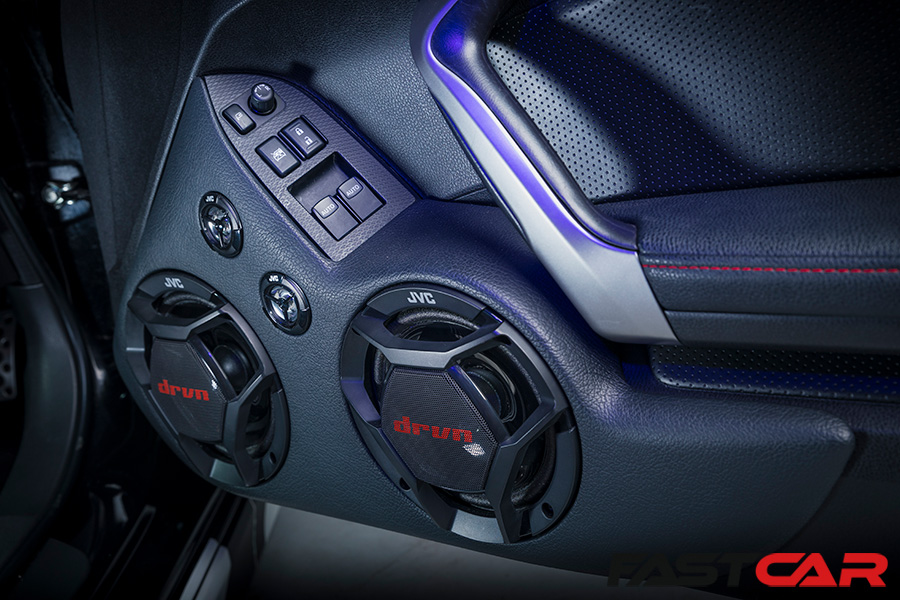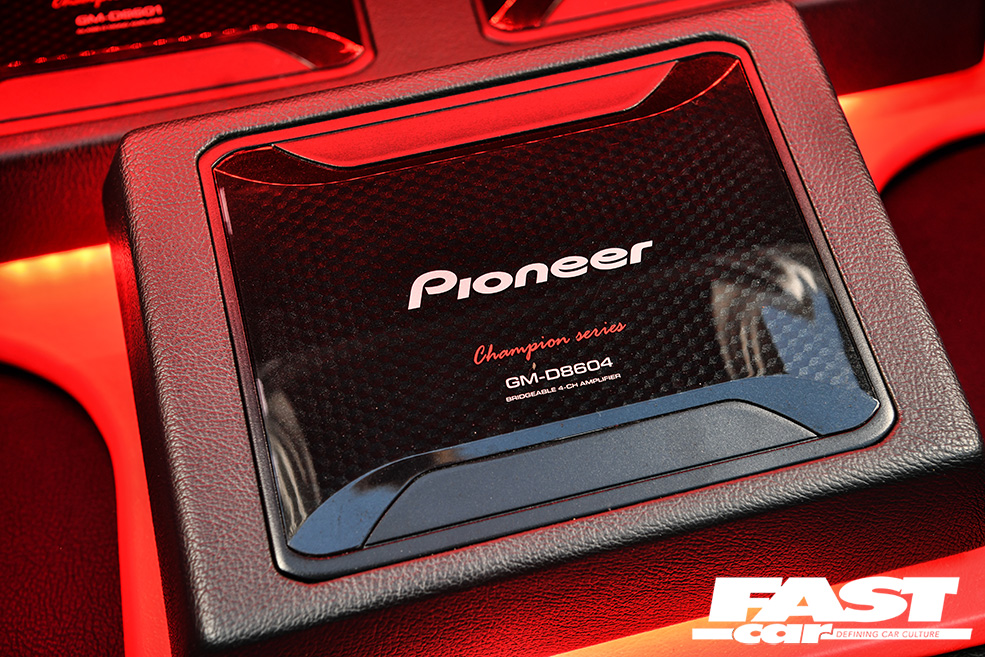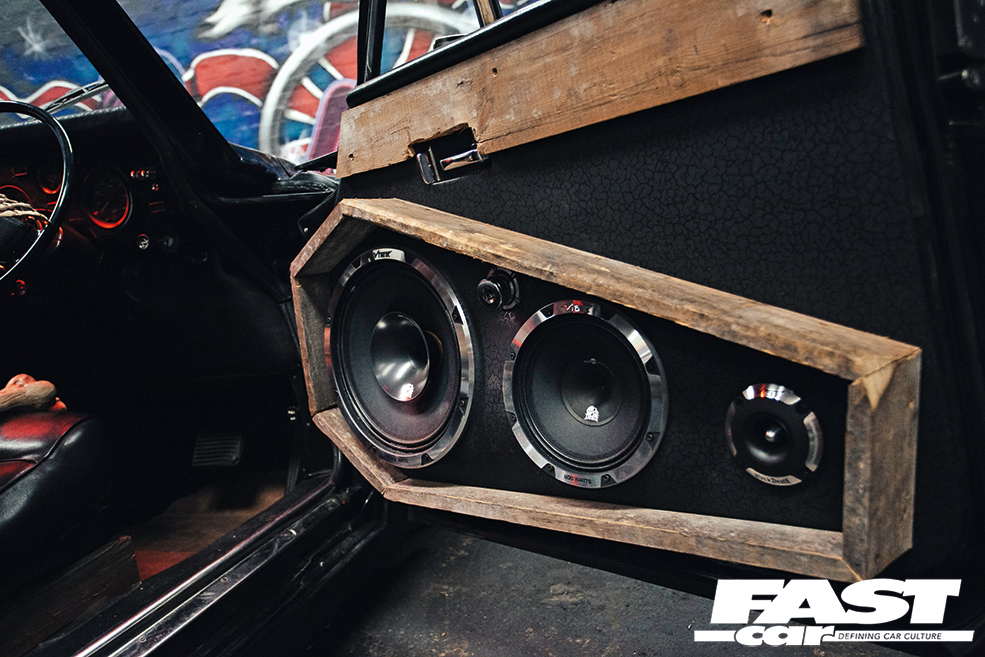We all love listening to music while driving, but how do car speakers work and why do people upgrade them? Let’s take a look.
Car speakers in factory-spec cars aren’t the best. Like standard head units, standard car speakers are generally rubbish. Worse still, they’re usually made of cardboard, have exceedingly low power handling and degrade over time. In other words rip ’em out and start over.
The Basics of car speakers
To understand what speakers do, first you’ve got to understand the nature of sound. The sound waves the human ear can pick up are broken up into four sub-sections (below):
- Treble: Generally 5000Hz+
- Mid-range: 400-5000Hz
- Mid-bass: 100-400Hz
- Sub-bass: 20-100Hz
Different speakers are designed to reproduce specific parts of the audio spectrum. A tweeter will reproduce treble frequencies; a mid-driver will take care of the mid-range and, to some extent, mid bass; while a subwoofer is the only thing that will reproduce sub bass frequencies.
Your system needs to pump out every part of this range to get a true representation of your music. That’s why you need a whole host of speakers in your car. The real art is finding the right balance between them.

How do car speakers work?
Speakers are technically known as a moving coil driver which, in true Ronseal fashion, means it’s driven by an electromagnetic coil. The majority of speakers work in the same way. The voice coil is attached to the underside of the cone and it magnetises when the signal is passed through it. When this happens it’s attracted to the magnet on the bottom of the driver. In turn, it pulls the cone down with it. When the signal quits so does the magnetic field and the suspension system makes the cone spring back. This pulsing cone generates the sound waves.

Amplification
Another aspect of how car speakers work is the amplifier. All car speakers need some sort of amplifier to work. Whether that’s the internal amp in your head unit or, for more serious applications, an aftermarket external amp.
It’s worth considering that a more powerful amplifier (with the gain turned down) on a lesser-rated speaker is a much better option than underpowering an expensive speaker. Aftermarket head units generally churn out a useable 50Watts per channel, but this might not be enough to balance out powerful subs so you may want to think about running a dedicated amplifier to all your speakers too. Remember the volume and sound quality can only be as good as your setup.
Check out our guide to car amplifiers for more advice.
Power Handling On Car Speakers
Just because it says 300Watts on the box doesn’t mean you can whack them in your doors and you’ll get 300Watts flowing though them. How car speakers work mean they can’t produce their own power for a start, so it’s all down to the source.
These peak power figures have little to do with how loud the speaker will go, or how good it will sound. The build quality, correct installation and how good the amplification is are the elements that need to be perfected.
For matching up car speakers and amplifiers, the best figure to check out is the continuous power (RMS). This should give you a much better indication of how much the speaker can handle.

Sizes of Car Speakers
The tweeter size is pretty much irrelevant here. It’s nearly always the size of the mid driver that you’ll be looking at. Most commonly, sizes for both types of speaker come in at either 4.5in or 6.5in and that’s pretty handy because it’s the most common sizes of OE units too.
Again, what you want depends on where you put ‘em. For the famous, oval 6x9in speakers things are a little different. These are specifically designed with large mid driver cones to produce more mid-bass than smaller speakers and are commonly mounted in a strong rear shelf rather than the standard speaker holes.
Full Range Car Speakers
The most common type of aftermarket speaker you’ll find is the humble full range unit. They’re called this because they incorporate both a tweeter (or multiple tweeters) and a mid-driver all in one. These are generally the cheapest and easiest to fit, especially in a basic system where you’ll probably use the standard mounting points. They come in a number of setups commonly coaxial (two-way) which have two drivers (mid and tweeter) and tri-axles which usually have two tweeters mounted over the mid.
Speaker Components
If you’re planning to spend a few quid and are after optimum performance look no further than component speakers. The weapon of choice for any serious install, the mids and tweeters aren’t all in one unit but work independently, giving greater flexibility for where you mount them. These usually incorporate either an internal or external passive crossover system. This is basically a little box of electronic wizardry that splits the signal into high (treble) and low (mid-bass/range) frequencies and sends it on to the relevant driver.
Adaptors
You won’t always need ’em, but if you want to make the fitting job easier than falling off a soap-covered log, buy speaker adaptors.
These are specific to each car model and enable you to fit a specific size aftermarket unit even if the original speakers are a weird shape. It’s all pretty handy if you are a novice installer, especially if you don’t fancy drilling a load of holes in your fresh motor.
The post How Car Speakers Work appeared first on Fast Car.
Leia Mais.